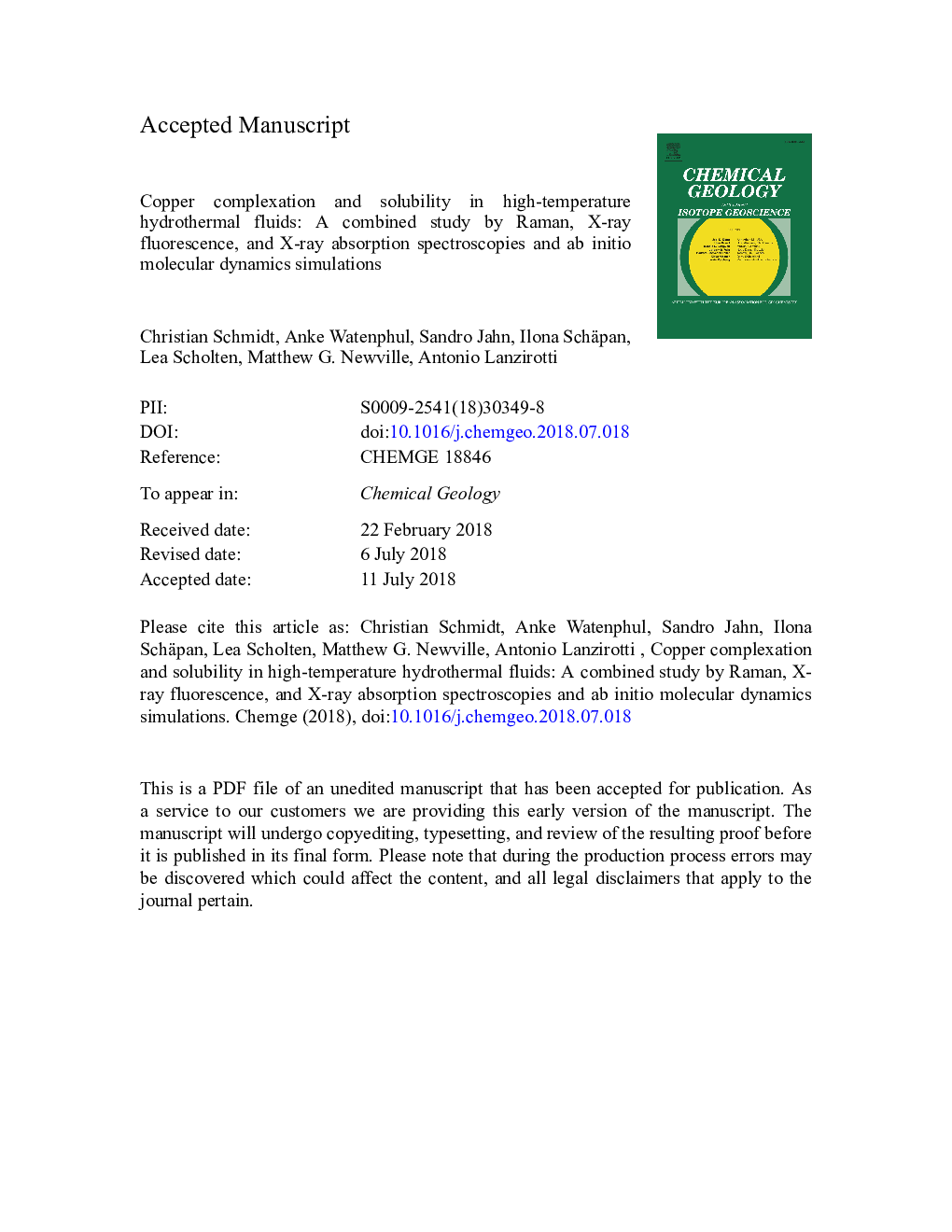| Article ID | Journal | Published Year | Pages | File Type |
|---|---|---|---|---|
| 8910118 | Chemical Geology | 2018 | 44 Pages |
Abstract
Overall, the results indicate that Cu(I) is transported predominantly as CuCl2â(aq) in reducing sulfur-free or H2Sâ¯Â±â¯S3â-bearing chloridic hydrothermal fluids. The decrease in the Cu solubility in H2Oâ¯+â¯HClâ¯Â±â¯NaClâ¯Â±â¯H2S fluids with increasing pressure without a detectable change in speciation is caused by decrease in the formation constant of CuCl2â(aq) with pressure. Changes in the copper speciation and depressurization can be ruled out as causes for hydrothermal copper ore formation at high fluid densities above the critical density. At this condition, copper ore may precipitate by dilution, cooling in the presence of H2S, increase in pH, and/or an increase in the H2S activity.
Related Topics
Physical Sciences and Engineering
Earth and Planetary Sciences
Geochemistry and Petrology
Authors
Christian Schmidt, Anke Watenphul, Sandro Jahn, Ilona Schäpan, Lea Scholten, Matthew G. Newville, Antonio Lanzirotti,
